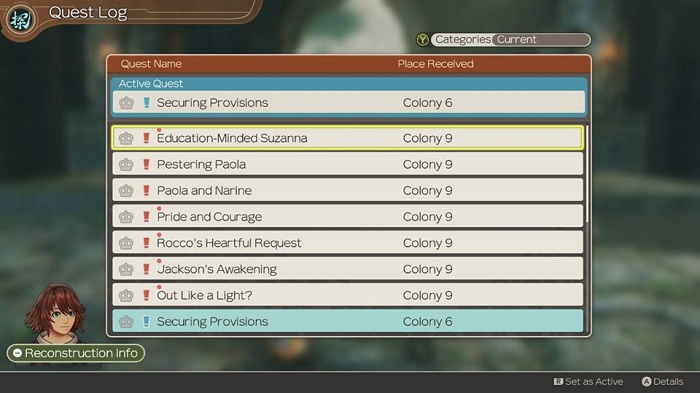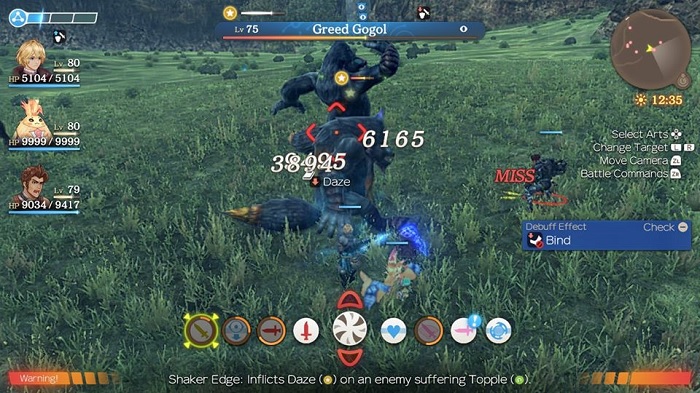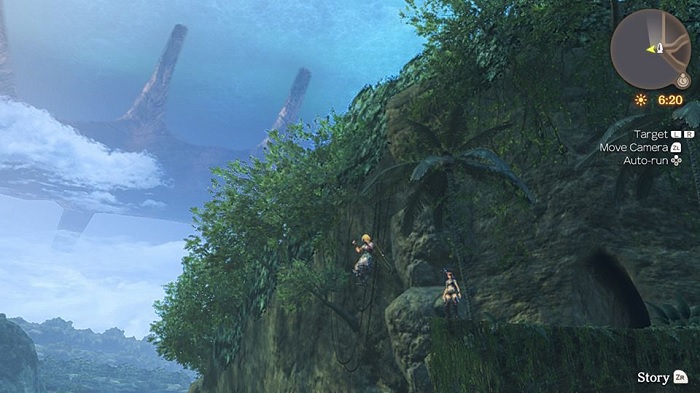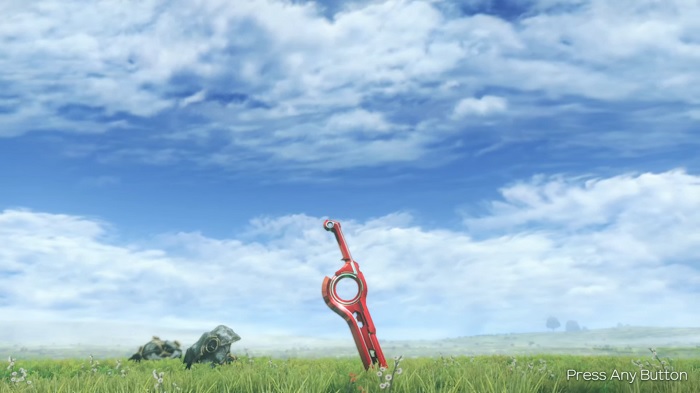Subjective:
Developer Monolith Soft and publisher Nintendo present the real-time RPG Xenoblade Chronicles: Definitive Edition (XC:DE) for review. Monolith Soft aims to revamp the 2010 version of Xenoblade Chronicles and remove the more dated aspects of its game design. Along with gameplay tweaks, the graphics and character models have received a facelift to be more in-line with the standards of contemporary Switch titles.
Objective:
XC: DE‘s primary gameplay loop, when the player is not talking to NPCs for quests, is positional real-time RPG combat. This involves controlling one of three party members, activating different skills for healing and damage, and trying to position the foes so that your party’s abilities do the maximum amount of damage. As the player can only control one member of the party, this makes managing threat (a statistic that determines who the enemy is attacking) an unwieldy task. Most of the time the player is stuck between holding off on their most powerful abilities or waiting for the slow-working artificial intelligence of the other party members utilize their abilities.
Outside combat, there is a crafting mini-game that produces equipment-enhancing gems. It’s little more than a roll of the dice as to how the gems turn out with a bit of control offered in how strong the relationship between the crafting party members. Party relationships are enhanced with special out-of-combat conversations called Heart-to-Hearts, which may be found around the gigantic world the player is mostly free to explore. Littered around the world are also a staggering number of side quests, some which may span several sections of the story and other simple delivery tasks, that also enhance the player’s relationship with a community for more rewards or options in bartering for stronger items.

Assessment:
Depending on your perspective, the Xeno prefix carries with it a weighty history of ambitious successes or half-realized failures. I’m in the camp that only Xenogears, that unfinished aggressively crazy combination of Lacanian psychoanalysis and mecha kung-fu combat, is a title worth pursuing. The later Xenosaga series tried too hard to play the long game and ended up providing two volumes with only parts of the story and an overstuffed third which threatened to careen the whole enterprise off a cliff. Even then, Xenosaga felt like a watered-down version of the sincere bonkers feel of Xenogears. Now there’s the Xenoblade franchise, which has been going strong for about 10 years, and seeks to bring the very first Wii title up-to-speed with modern consoles in XC: DE.
The DE version of XC is a slick, if unfortunate, case of tempering the extremes of an interesting idea until a standard narrative remains. The protagonist of XC: DE – the bright-eyed, blonde-haired, constantly good Shulk – is more interesting because of the unusual laser sword he uses in battle than anything to do with his personality. He’s a far cry from the psychologically damaged Fei of Xenogears or morally compromised Shion of Xenosaga. It’s all bread and butter heroics, and even late-game efforts to provide some moral complexity to Shulk’s quest last all of a few minutes before Shulk finds a way to continue onward unfettered.

So much of XC: DE follows this same sort of unsurprising path. You have the option of playing one of many characters but there’s little reason to do that as there’s no option to switch in battle. This is an odd omission for this update since many of the combat abilities involve positioning the character to the side of an enemy, the rear, or lining up to affect multiple allies with the same buff. It’s overall more efficient just to learn one or two characters very well, if even bothering with two as XC: DE rarely forces the player to be anyone other than Shulk for long.
None of the support systems encourage party experimentation either as the power of the party-wide chain attack, crafting, and passive buffs rely on building up close relationships. Building those close relationships mostly require the same party members to be giving gifts to one another in certain categories of item. So if you want to be most effective, get used to controlling the same person with the same party for long stretches of XC: DE.
While the core and supporting systems of XC: DE don’t encourage variety, the aesthetics do. XC: DE is at least blessed with wonderfully updated character models that builds on the already strong art design of the original Xenoblade Chronicles. It’s easy to get mesmerized by the humanoid structures and viral-looking populations dotting each of the giants that serve as the setting for XC: DE. I only noticed how grainy and out-of-date some of the graphics were in still shots. As most of XC: DE keeps you moving, and even includes an automatic running option to encourage scanning the horizon while on-the-move.

Using XC: DE as a portable time waster is the best use of XC: DE since there’s not much else to get involved with. Even the oodles of side quests, many of which are distributed by the same person, do nothing to vary up the gameplay and exist mostly as an increase of available content in volume. If it were more a variety in quality, or at least encouraged a deeper dive into XC: DE‘s systems, then it might have felt less like treading water until I felt like continuing on with the plot I already wasn’t too interested in.
Xenoblade Chronicles: Definitive Edition was played and reviewed using a reviewer-purchased digital copy of the game for the Nintendo Switch.
The Review
Xenoblade Chronicles: Definitive Edition
XC: DE is a reminder of the days when RPGs were in a period of remission during the heyday of the Nintendo Wii. Fans were starved of just about anything, leading to decent or just functional games like the original Xenoblade to reach a wider audience than they might have in another time. Unless you're extremely in debt to Monolith Soft for doing slightly more than the bare minimum in a watered-down version of their former glorious ambition, then it's okay to skip out on XC: DE.
PROS
- Streamlines some of the earlier MMO janky gameplay of the Wii original into an easier to navigate package.
- Art direction receives a great uplift and only falters in moments where nothing is in motion.
CONS
- No incentive or strong reason to switch characters around, or experiment, as much of the game is bult around repetious relationship-building with the same group.
- Volume is not depth, and after nearly triple-digit fetch and slay quests I was whispering "Enough already."



